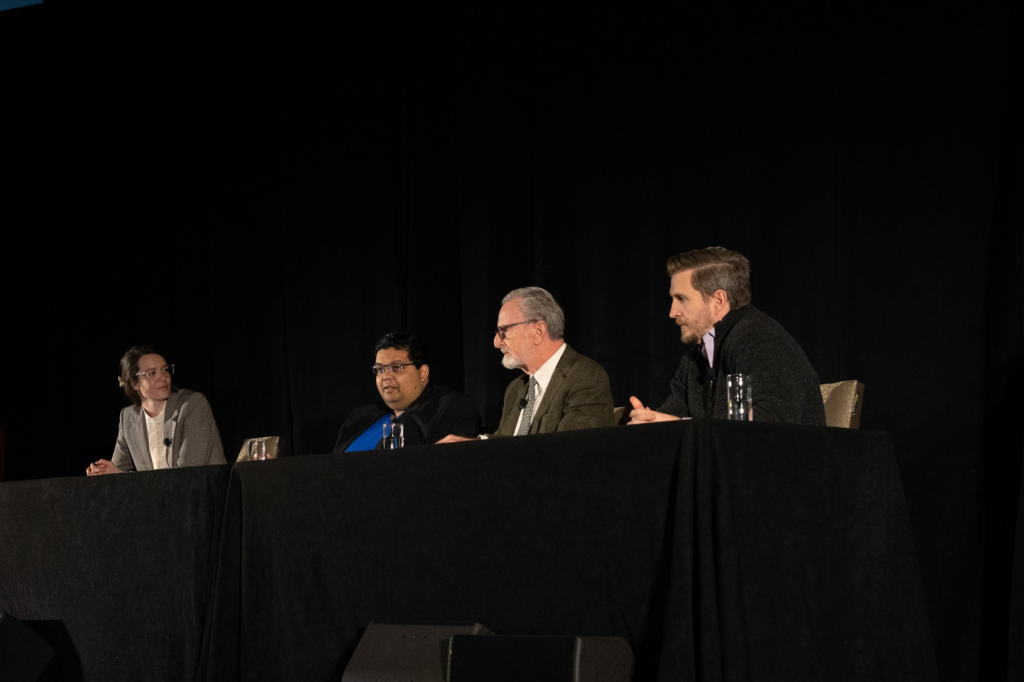
Closing the Loop: Building a Battery Recycling Ecosystem
Building a robust battery recycling ecosystem is essential to unlocking a sustainable clean energy future. Industry and policymakers both play crucial roles in overcoming remaining challenges.
As EV adoption accelerates, demand for batteries is increasing. Battery recycling presents an opportunity to make the EV supply chain more sustainable, while increasing the amount of material available to meet growing demand. In a panel during the MIT Energy Conference, a group of industry experts discussed the evolving landscape of battery recycling. The takeaway? The future is exciting, but the current state is complicated and big challenges remain.
Recycling is an attractive proposition in a market with low material growth rates and short product life cycles, as recapturing enough material to meet current demand is relatively easy. However, when the situation is reversed—i.e. demand for material is growing rapidly and products have long life cycles—recycling struggles to meet current demand.
Today’s battery recycling market falls squarely in the latter category. Demand for lithium has seen high growth rates for several years with no signs of slowing down anytime soon: lithium battery demand is expected to grow ten-fold by 2030. The average lifetime of a vehicle is upwards of a decade. This means the current amount of recycled material is insignificant relative to demand. However, as EV demand stabilizes and material growth rates slow, the availability of recycled materials will start to match demand more closely, and a sustainable EV recycling ecosystem will be feasible. The challenge is that we need to put the technology in place today—while recycling is still a less than economical proposition—to prepare for this future.
There are three main factors in determining the economics of battery recycling: price of metal, cost of acquiring feedstock, and the amount of plant capacity being utilized. The technology itself is relatively insignificant; the extractive step of the process represents ~5% of the total cost. The biggest cost driver is scrap acquisition, which largely boils down to transportation costs. Metal prices also have a huge impact on profitability. Recyclers often aspire to achieve 95% recovery; however, if metal prices are high, ~80% recovery could still be profitable, but if prices are low, even 99% recovery might not make economic sense.

Subsidies could be one way to drive the economics of battery recycling. However, the panelists agreed that policy should be considered more as “icing on the cake” rather than the foundation of a sustainable business model. As one panelist put it, “you need to play the game in front of you, not the game you want.” Recycling must be rooted in competitive advantage in order to succeed. Subsidies can play a role in helping battery recycling get off the ground, as this is when the cost of production is highest, but should be phased out in the longer-term as recycling capacity scales.
Another challenge to reducing recycling costs is the increasing complexity of the devices being recycled. As one panelist put it, “we don’t recycle metals, we recycle devices.” Our devices are getting more complex each year. Simplifying these devices and designing for disassembly could help to bring down recycling costs. The conundrum is that this helps the recycler, but the cost falls on the producer, who is incentivized to design only for their own cost and performance. This might be best solved through policy and regulation.
Battery recycling has a key role to play in unlocking a sustainable clean energy future. It is critical to put in place today the systems and technologies that will enable battery recycling at scale in the future. This market development must be led by the private sector to ensure it is grounded in a strong business case, while being enabled by supportive policy and regulation. Challenges remain, but the future is exciting.
Emily Goldfield
MBA Student, Wharton SchoolEmily Goldfield has worked on a wide range of clean energy projects through her time at RMI, BCG, and Myst AI. Upon graduating, she’ll be joining the Department of Energy’s Office of Clean Energy Demonstrations where she’ll be developing a strategy to guide OCED’s $25 billion portfolio.

